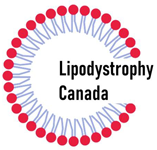What is Lipodystrophy?
Lipodystrophy is a rare disorder that affects how the body accumulates and stores fat. It can lead to abnormal fat loss or redistribution in certain areas of the body. Here are some key points about lipodystrophy
Types of Lipodystrophy:
Genetic Forms:
- Congenital Generalized Lipodystrophy (CGL): This rare type of lipodystrophy involves significant and sometimes near-total fat loss due to a genetic mutation. It is usually diagnosed within the first year of life.
- Familial Partial Lipodystrophy (FPLD): Inherited from parents, FPLD mainly affects the legs and arms, resulting in fat loss, while excess fat accumulates in the face and neck.
Acquired Forms:
- Acquired Generalized Lipodystrophy (AGL): Also known as Lawrence syndrome, this form leads to fat loss in the face, neck, arms, and legs1.
General Symptoms and Health Impact:
- Lipodystrophy can cause significant changes in appearance due to fat loss or abnormal fat distribution.
- Metabolically, it can lead to diabetes and irregular cholesterol levels.
- Fat may accumulate in places where it shouldn’t, such as blood vessels and internal organs2.
Treatment and Outlook:
- While there is no cure for lipodystrophy, treatments focus on managing symptoms and associated health conditions.
- Lifestyle modifications, dietary changes, and exercise can help.
1 my.clevelandclinic.org
2 chop.edu
3 medicalnewstoday.com
4 yalemedicine.org
5 hivinfo.nih.gov
